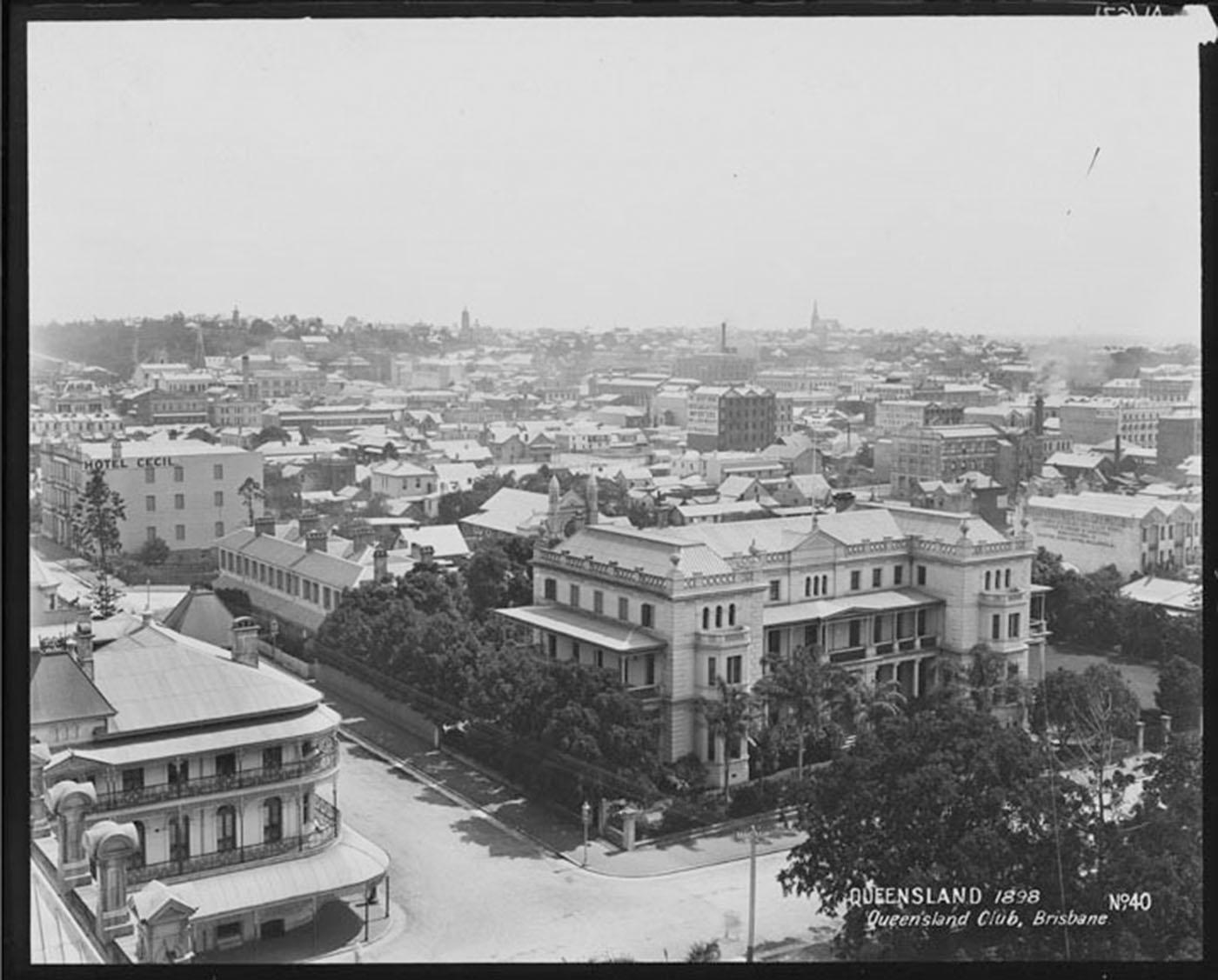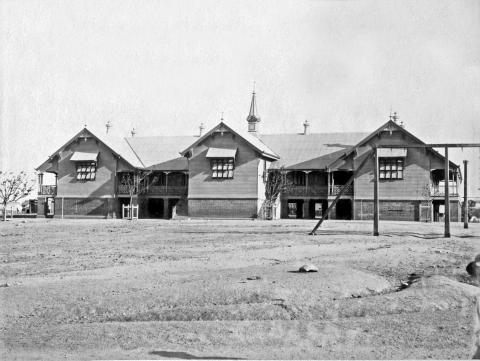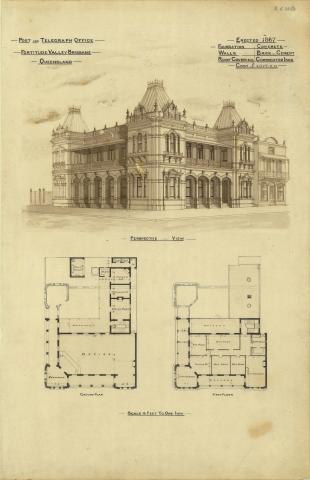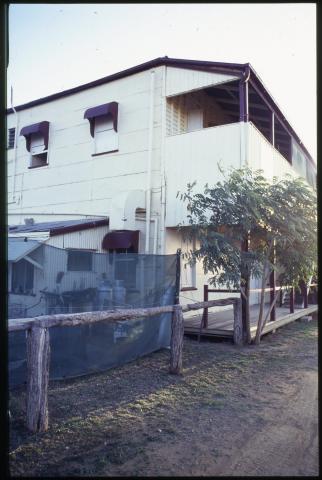
- News of the day
-
Brisbane Courier, Wednesday 28 May 1884, page 5
THE QUEENSLAND CLUB.
AT the corner of Alice and George streets stands the new building of the Queensland Club, one of the finest structures in the city. The site is most desirable, being in a quiet and healthy part of the city, and the building is so placed as to overlook the Botanical Gardens and a portion of the river and Kangaroo Point. Mr. Stanley, the architect, who designed the new edifice, and under whose supervision it was erected, has observed a regard for exterior effects, which must be highly gratifying to those citizens and visitors who delight to look upon imposing places. The front is to Alice-street, and occupies a space of 180ft., while the depth is 60ft. and the frontage to George-street 63ft. The main entrance to the building is covered by projecting porches, and the entrance hall is a fine spacious place. To the left is the strangers' room, furnished in walnut and hard-grained morocco, and beyond that on the same side is the club reading-room, with solid oak furniture upholstered in green morocco; adjoining the reading-room is the club-room, which is divided only by folding doors. These rooms face George-street. On the right of the entrance hall is the strangers' dining-room, then comes the serving-room - which communicates by means of a lift with the culinary department, and beyond this again the members' dining-hall, a splendid apartment 60ft. long by 24ft. wide, and furnished with yellowwood, upholstered in dark morocco. This furniture was made in Bris bane, and is from the establishment of Mr John Petrie. At the rear of the dining hall is the smoking room, about 24ft square, and beyond this again is the billiard room, a place well lighted and supplied with two tables, one, the old table from the Mary-street Club-house, and the other a new importation, makers, Burrowes and Watts. On the basement floor the kitchen, the cook's larder, the scullery, a large storeroom, the cellar, the servants' hall, and the sleeping apartment of the men servants are placed. The general arrangement here is capital; every room is spacious and admirably ventilated, and the servants' apartments particularly are very comfortable indeed. On the first floor of the building are bedrooms and two card rooms, all being conveniently arranged, the cardrooms are delightfully situated. Nearly all the second floor is used for sleeping apartments, and in the northern corner a place is set apart for the female servants, for bedrooms, and a large workroom. 0n the first and second floors are the bathrooms, three on each floor, and hot or cold water, to whichever the bather may incline, is obtainable by merely turning a tap. The hot water is laid on from the kitchen by means of pipes, and the innovation will no doubt be appreciated by members who have to travel in cold dusty weather, or who cannot stand the shock of the bracing cold bath in this weather. The general design of the building is described by the architect as being in the Italian style, the Doric element prevailing in the lower portions, and Corinthian columns being employed for the upper floor balconies. The whole consists of a centre and two wings, and it is from Parliament House that the best view of the place is to be obtained. At the time of our visit some of the contractors' men were still at work, and carpets were being prepared and oilcloth for the halls and passages was being laid. The work of removing effects from the old clubhouse was going on, and though some members have already occupied the new building for sleeping purposes, it is a week or so yet from being in proper going order. When everything is straight, and the carpenters' persistent hammering is heard no more within the walls, the new house will be a credit to the members of the Queensland Club and will no doubt be heartily appreciated by them. Most of the furniture on the entrance floor has been imported from England; but that in the bedrooms has been turned out in Brisbane, and the contractor for it, Mr. John Petrie, is to be congratulated on the excellent way in which his work has been accomplished In every room in the building - that is every room which members will occupy - is the electric bell convenience and in the hall the Cutmore system of bells has been fitted up so that attendants will be able to see by an automatic presentation of a number the room at which they are re quired. The balconies of the building are 10ft. in width, and in the summer evenings, they will, no doubt, be fully appreciated. They run along the three principal fronts of the place. Provision has been made for a hydraulic lift to work from the basement to the top story, but those who do not like climbing upstairs will be sorry to hear that there is yet no sign of the great boon referred to being prepared. On the whole, the building and the interior arrangements of it are very satisfactory and members will not now have to complain of want of space, or of the stuffiness of their bedrooms.
- Background
-
The Queensland Club building was constructed between 1882-84. The club was established in December 1859 following the apparent success of the North Australian Club in Ipswich, and coinciding with the establishment of Queensland as a separate colony. Adopting the British tradition of private clubs for influential members of the community, it provided a recreational venue and accommodation for men of common interests and socio-economic backgrounds. Members were mainly pastoralists, politicians, and business and professional men.
/153.0273757,-27.4748171,7/450x450@2x.png?access_token=pk.eyJ1IjoicXNhLWRpc2NvLXFsZCIsImEiOiJjamJmdTgyZXEyeWNjMnlxZm8xcmtieHgxIn0.lmT9J5tTPKGuuccQgCVSAg)



